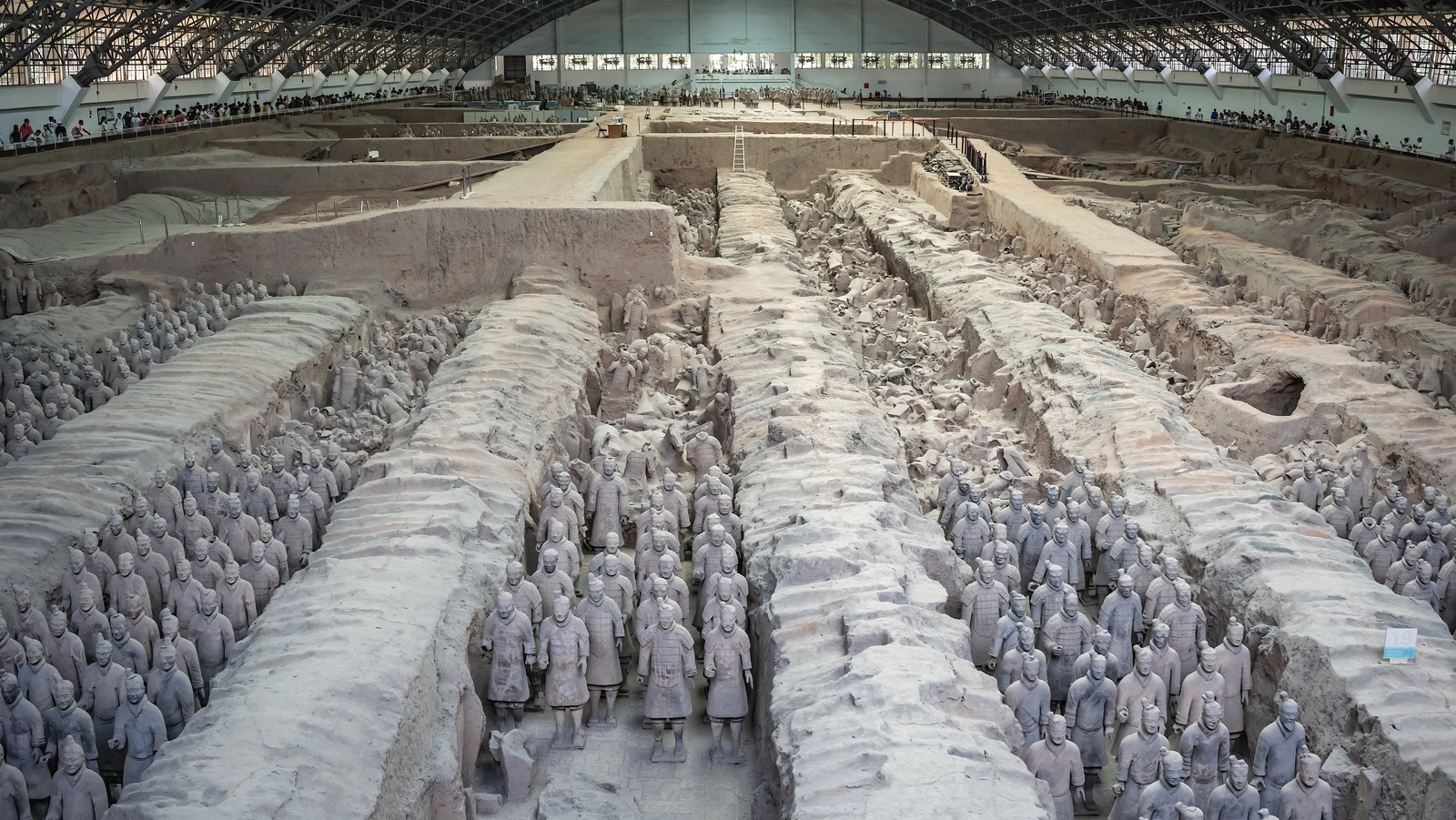
Looking at the endless rows of terracotta warriors at Emperor Qin Shi Huang’s tomb from a distance, you’d be forgiven for thinking that they’re all the same diecast model. But, each soldier has a different face and other adornments like hairstyles, hats, moustaches, shoes, ears, and so forth. That’s 2,000 different faces excavated and restored so far out of a likely 8,000 total. While this is far less than the emperor’s actual army of an estimated 500,000, it’s more than enough to strain the limits of the production and artistry of the time. This is why it looks like we have some kind of early assembly-line production process to thank for crafting the horde’s base figures.
Chinese craftsmen used molds for certain parts of the warriors’ bodies, and then added layers of clay on top of them to make each figure distinct. Most of the warriors’ hands, for instance, are identical and came from the same mold. The warriors’ heads, meanwhile, come from eight separate molds. After craftsmen added each characters’ unique features, they lacquered each warrior to create a base for paint, and then painted according to certain patterns and colors that indicated soldier ranks. These colors were typically bright, but of course have long-faded by now and left only small traces. Once a clay warrior was finished, he was fired and hardened into his final, terracotta form.
[Featured image by thierrytutin via Wikimedia Commons | Cropped and scaled | CC BY 2.0 DEED]









